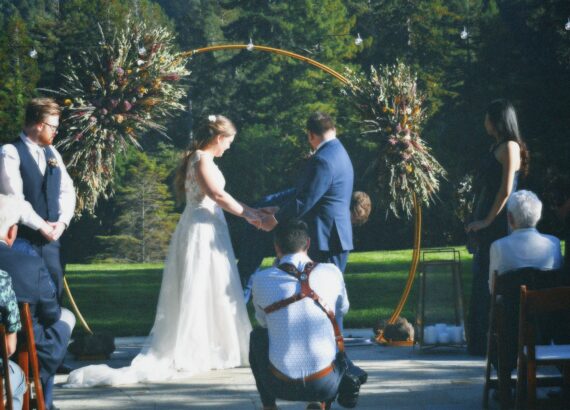
Getting Started On The Smaller Foot
Getting Started
On The Wrong Foot.
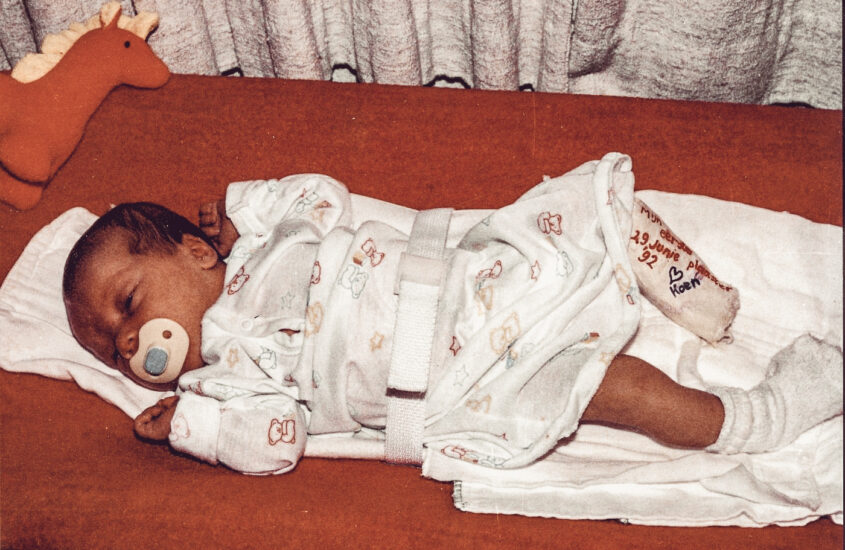
One of the most common birth defects, clubfoot occurs in approximately 1 out of 800 births and has been documented for thousands of years.
There are about 175,000 new cases of clubfoot each year around the world. In developed countries, clubfoot is often diagnosed via ultrasound and treated shortly after birth using the Ponseti Method.
Children born with clubfoot,
typically go on to live a healthy, active life. Unfortunately, 85% of children born with clubfoot in low- or middle-income countries have limited access to proper treatment.
The exact causes are unknown, but research indicates genetic factors may play a role. Clubfoot results from abnormal development of the muscles, tendons, and bones of the fetus while in the womb. Shortened tendons and ligaments on the inside of the lower leg lead to the foot turning inward, appearing twisted and can even look as if it’s upside down. Despite its appearance, clubfoot itself doesn’t cause any discomfort or pain. It occurs more often in boys than girls and occurs in both feet about 50% of the time. So I just beat the odds left and right.
My parents only had one ultrasound while my mom was pregnant with me at about four months and they didn’t see it then; however, ultrasounds were not the quality they are today. So, when I was born it was noticed immediately by the doctor or one of the nurses that my foot was turned. Mom didn’t see it until it was pointed out to her and she remembered someone saying that it may be turned due to the position I was in in the womb. So, a week after I was born, they took me to see the doctor and he said he thought it was positional as well and put a cast on it to straighten it out. Then, cast after cast; they began to question him. He said that they wouldn’t be able to tell what is exactly wrong until I was a year old and then he could x-ray because the bones would be formed enough to see. Once my first birthday came around, they asked for an x-ray and afterward, it was said that it was a club foot and that I would need to go to a specialist. My parents were furious! My mom swears that he was just stringing her along that whole year to get more insurance money and that he actually knew I had a club foot long before the x-ray. Because treatment was delayed, my bones had formed incorrectly and more drastic measures were needed.
I was a little more than a year old by the time my parents made an appointment with the orthopedic doctor to perform my surgery. On the first visit to the specialist, I was sitting on my mom’s lap in the office with my shoes and socks off and he walked in the room and glanced down at my foot and said, “oh, she’s got a club foot.” She asked him how he knew by just looking and he said he sees them all the time. He said he wished they had brought me in when I was an infant because he usually performs these types of surgeries at about 4 months of age. Also, my parents had cheap insurance through my dad’s job that required the pediatrician to refer a patient to a specialist. If my pediatrician had referred me to a specialist when I was an infant, then he would have lost all the insurance money for the year that he treated me.
Mother’s Note: “I learned a big lesson! Not all doctors can be trusted.”
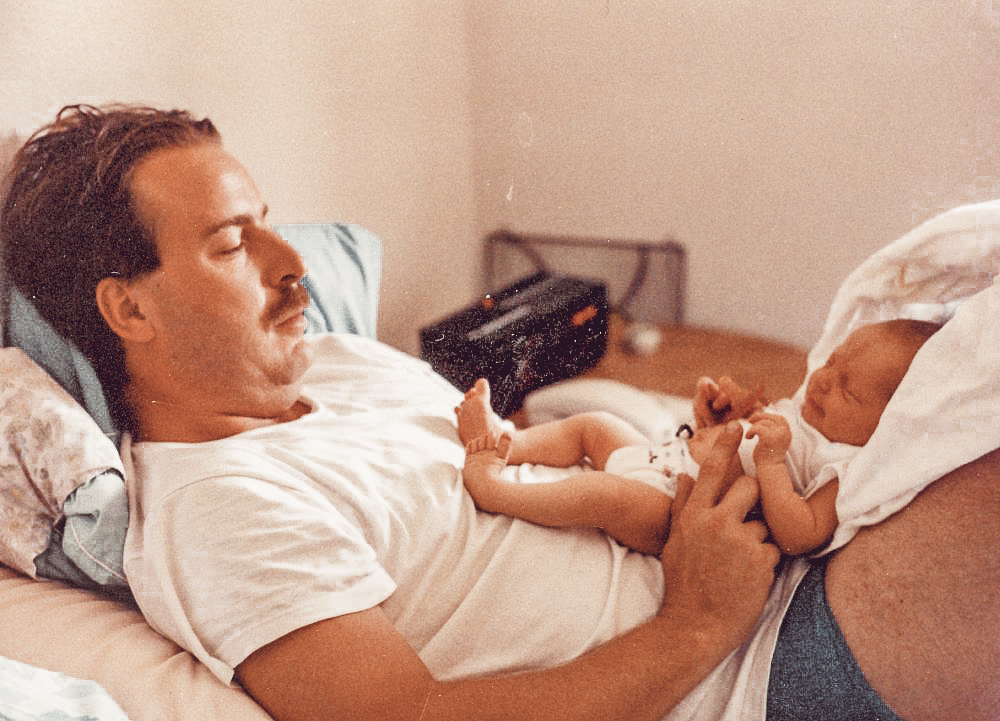
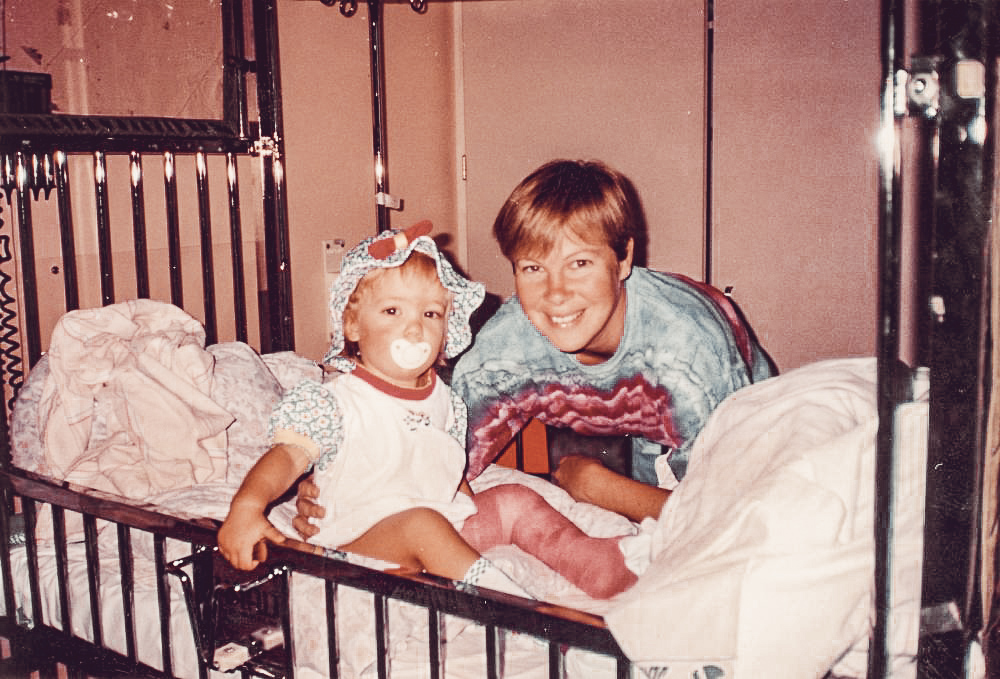
My surgery was scheduled when I was 15 months old on a Friday, October 13th! My parents were nervous about that, but of course, it all worked out just fine. I stayed overnight and was released the next day on October 14th, the day of my parent’s wedding anniversary. They sliced my tendon so it could be stretched and put a pin in there to hold it in place. I had that cast on, which was bent at the knee, for 6 weeks. Then, we returned to the orthopedic’s office and he removed that cast and pulled the pin out from the bottom of my foot. Then, he put another cast on, but this one was a walking cast. I did very well walking around, but I did have to hold on to something; so my parent’s got me a kid’s grocery cart to push. That cast was on for another 6 weeks. So, the total process took 3 months from the time of surgery to the time I was healed enough to walk on my own. I was 18 months old when we arrived home after the walking cast was removed, mom put me down on the living room floor and I began to crawl. Mom said, “No, you need to walk.” She helped me up on my feet and I walked for the very first time. The doctor said that my left calf and foot size would always be smaller than the right, but I should not have any problems. He added that years down the road I may have to have another surgery, but he didn’t know for sure.
Growing up, I hardly noticed it affecting me physically. I participated in T-ball and soccer and never had any issues keeping up with the other kids. It wasn’t until I started working for Disney in my early 20’s, that I started to notice my actual physical limitations. One of my favorite memories from that time was meeting a family who had a newborn son with two clubbed feet. He was in the stroller as they approached me to take a photo. I asked about his feet and they looked at me with shock after I told them how it looked just like mine. I had never actually seen another clubbed foot in person before. We chatted for a while, mostly answering dozens of questions about what my treatment was like and how I’m dealing with it now that I’m an adult. I think I even ended up hugging the mother before they left. It was a special moment for me.
After working 9-13 hour days entirely on my feet at Disneyland for 8 months, I returned to university where I proceeded to wear terribly unsupportive footwear while walking (or frantically running in some instances) all over campus. Up until this point, I had never felt pain when I walked. I ended up earning some serious tendonitis in my left foot which would require a walking boot for 6 weeks. You would think I’d learned my lesson? Absolutely not. I returned to work for the mouse, but in Orlando, Fl this time. It wouldn’t take me longer than the first week to develop tendinitis again. I was in so much pain, even the pressure of putting my foot on the floor was enough to bring me to tears. Thankfully, I had brought my boot with me for such an occasion. The only problem, if Disney found out I was injured this badly, I wouldn’t have been able to do my job and would have been put on modified duty for the remainder of my internship. AKA folding silverware into napkins. Thankfully during classroom training, I was able to wear the boot to work, but once I was scheduled for my first actual shift, I pretended that it wasn’t an issue. I would be on my feet all day, and by the time I’d get home I was on the couch with an ice pack and some Advil. There were plenty of time times I would venture into the park with friends and I’d often make them push me around in a wheelchair in combination with wearing my boot. I was careful not to let any of my managers see me, just in case. While using a wheelchair was a big help on those long days, I don’t often take advantage of my inability to walk right. I think I qualify for government assistance since I do have a physical disability, but I don’t feel right using any of it since what I have is manageable, for now.
It’s been a few years since then and I’ve finally learned to take better care of myself. I still use my boot from time to time, but just as a precaution. There are times I overexert my foot and it’ll swell up and it’ll hurt to walk but not nearly as bad as before. I’m really dreading the thought of more surgery but if it’s in my best interest for my future health, I don’t really have a choice. I am very lucky to have access to medical care that saved my foot, but there are so many around the world that don’t. A few years ago, I was going through my box of old casts (yes my parents kept most of them) and I found the brace I would have to wear while I slept to train my feet. It was basically a metal bar with two shoes attached to it. The left shoe was adjustable to be able to rotate my foot outward. It a little outdated but still functional and after a little research I found a charity that accepts these types of things to give to children who can’t afford them otherwise. It’s not like I was using it anymore.
MiracleFeet has helped change the lives of more than 38,000 children in 27 different countries. Unlike so many birth defects, clubfoot is 100% treatable and fairly inexpensive. With their support, treatment is free or extremely low-cost for the families who receive it. Over 90% of supported clinics are located in public hospitals, ensuring treatment is effective and the model is sustainable. Half of children in treatment do not wear their brace as prescribed, which often results in relapse. In addition, most braces are either high quality but unaffordable ($200 – $1,000) or inexpensive but hard to use and uncomfortable for the child. ($8 – $40). In 2013 they designed their own brace that would be affordable, easy to use, and has improved the lives of both children and parents all over the world.

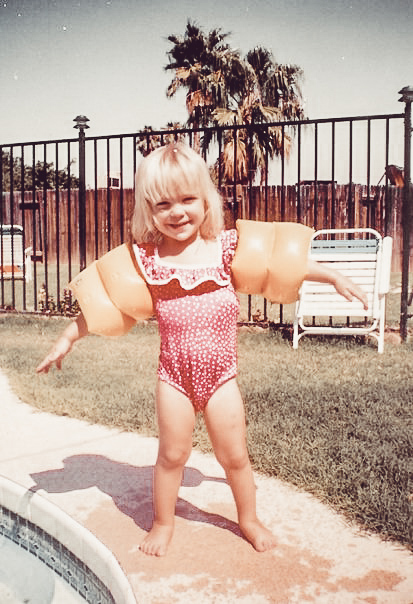
TLDR; My foot is a little small
Thanks for reading & Drink more water
-Ri

Raisa Lynn
A ridiculously hard-working designer & content creator. Internet culture connoisseur. Aspirant writer. Dog mom who's here for your entertainment.


